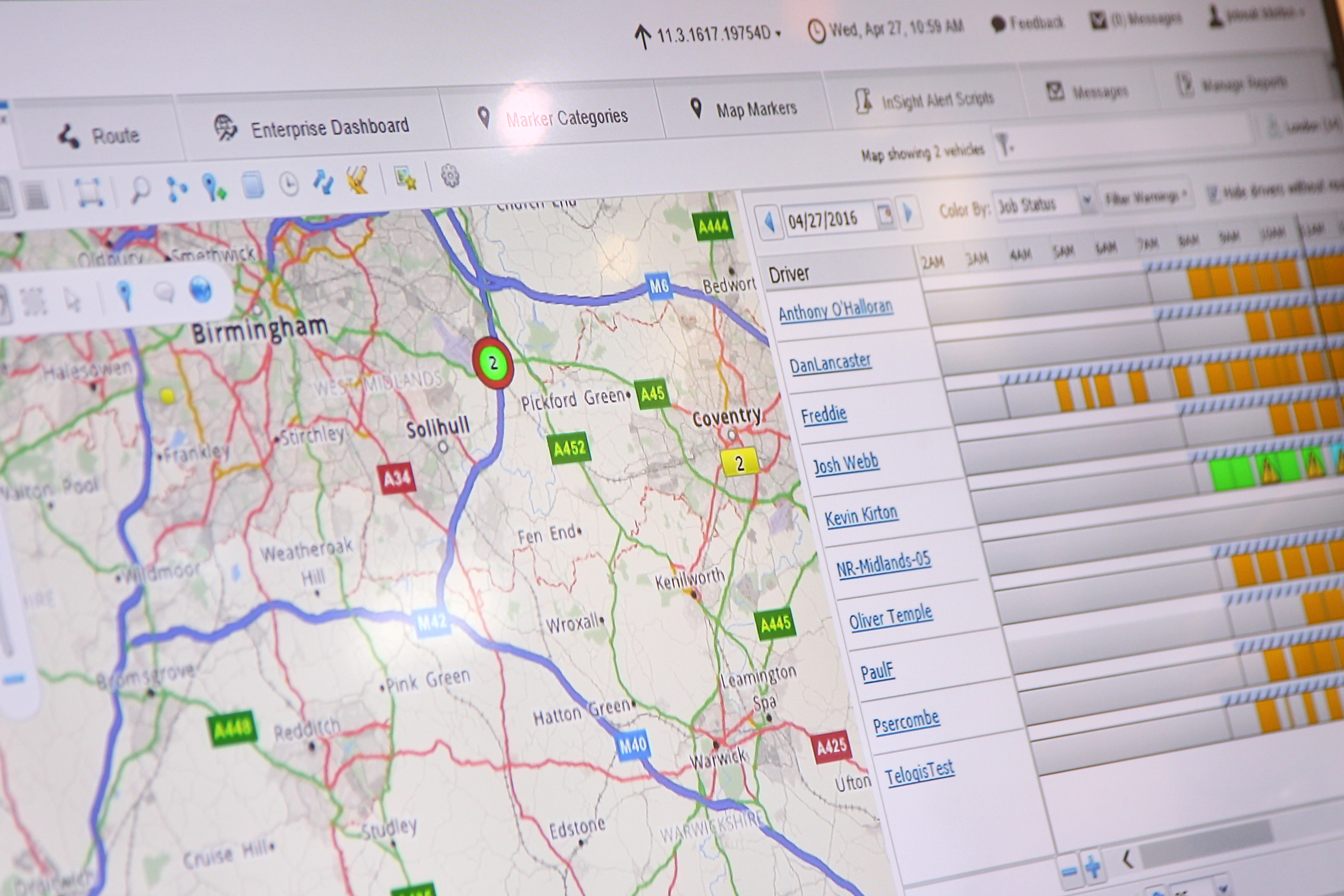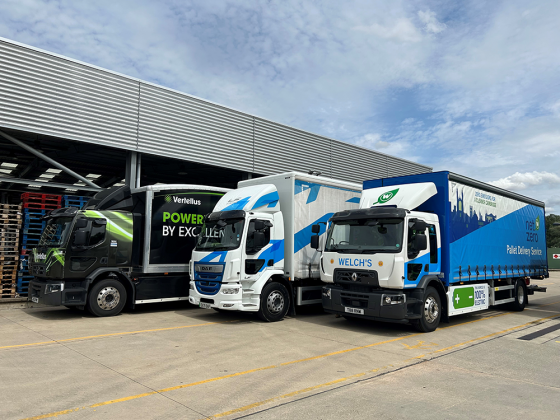Gaining control of your fleet through telematics

Telematics is being widely adopted by fleets, providing businesses with journey and driving information that enables better decision-making to make the most efficient use of the costly transport resource
Running a fleet can be an enormous challenge, never more so than when vehicles are doing what they should be – being driven.
However, this is when vehicles can be at their most expensive, either through wear and tear, fuel use or even accidents, and this is the point at which the fleet manager has the least control.
Telematics is being widely adopted by fleets, of all sizes, providing the business with journey and driving information that enables decisions to be made to make the most efficient use of the costly transport resource.
What is telematics?
Vehicle telematics is based on the idea of gathering, storing, and transmitting information about the vehicle for monitoring purposes. This information can be used to analyse vehicle performance, vehicle conditions, driver performance, and more. However, all the vehicle data in the world is utterly useless unless it is used to inform better decision making. How the data is analysed, and the subsequent decisions it informs are key to a successful implementation.
Telematics devices are unobtrusive, passive observers that are located out of the way of the vehicle controls and the drivers sight line. These monitors collect information and transmit it back to a data collection point, usually back at the office.
The devices themselves come in a number of forms, allowing fleet managers to use what is best for them. Much of it depends on how the data will be collected, and the available budget.
Mobile only and Bluetooth Assist telematics are cost-effective but are lacking in capabilities. Along with 12V connectors, they can be easily transferred from one vehicle to another, so they can be kept with drivers if users are regularly switching vehicles.
Onboard Diagnostic (OBD) devices plug into the OBD port on the underside of the steering column. They will have Bluetooth or even cellular capabilities and will be able to collect a richer set of data to be used. They can be moved from one vehicle to another, but it is a little more difficult than with mobile-only systems and 12V connectors. They are generally the best route for most fleets.
Original Equipment Manufacturer (OEM) products are very capable, but are also the most expensive, and are permanently fixed to the vehicle.
The benefits of telematics
One key question to answer in the quest for telematics success is why the need for a telematics system?
The answer will vary depending on whether the question comes from the finance department, HR, the fleet manager, drivers or even a union representative.
However, in most cases, the issues covered fall into four broad themes, all of which are interlinked: mileage and time management, fuel and emissions, safety and security and financial benefits. Mileage and time management
Telematics shows where vehicles are being driven and how they are being used. This can benefit the business in a number of ways.
Tracking systems are able to identify a vehicle’s location, so the right vehicle and employee can be sent to the closest job, by the most efficient route, guided by real time traffic information.
Automatic mileage updates can be received by managers or suppliers, such as leasing companies, to enable proactive servicing and timely replacement of vehicles. Telematics can help automate manual and time-consuming processes, such as timesheets, to make them more accurate and reduce paperwork.
The system will automatically log vehicle use and location along with the start and end of the working day. This information can then be imported into payroll systems.
Business or private mileage can be separated to improve the accuracy of expenses claims.
Fuel and emissions
Telematics can assist in planning more fuel-efficient journeys, and encourage less aggressive driving, resulting in lower fuel bills. In addition, systems can report on the fuel economy of specific vehicles.
In a recent study of company car drivers, a telematics system identified a 50 per cent difference in fuel economy being achieved in identical cars over similar journeys. Much of the excess fuel use was down to driving style, including excessive speed and harsh acceleration.
This level of insight isn’t possible with other fuel management systems, such as fuel cards, mainly as the process involves the driver accurately recording mileage when filling up.
By having more accurate, vehicle-specific data, a company can quickly identify where action needs to be taken, such as with fuel efficient driver training.
By improving fuel economy and reducing time spent idling, a business can reduce its total carbon emissions, a key consideration as businesses are increasingly required to provide carbon reporting as part of their annual results.
Safety & Security
Telematics can provide the information needed to improve safety, reduce accidents and combat vehicle crime. Some systems can clearly identify speeding, harsh braking and acceleration, sudden steering changes, over-revving and hours of vehicle use. This information can be used to pinpoint safety issues so drivers and managers can be trained and educated.
Studies have shown that for each 1mph reduction in average speed, accident frequency reduces by six per cent. Typical own damage costs rarely fall below £1,100 per claim, while average insurance claims including third-party damage and injury claims can be more than £4,000, a good reason to manage vehicles using actual and real time data.
In addition, telematics can act as a security system, with unplanned vehicle movements raising an alarm and pinpointing the vehicle so police can be directed to its location.
Personal safety can be enhanced for lone workers too, as telematics can track their location and vehicles can be fitted with panic alarms in case of emergency.
Financial benefits
Introducing telemetry is no different than investing in any other business system, it has to make business sense.
Typical figures suggest that through better scheduling, higher productivity and increased vehicle utilisation, operating costs can fall by ten per cent.
By covering fewer miles, reducing speeding and improving driving style, fuel use and CO2 emissions can be cut by 15 per cent.
Finally, reduced speeding and greater levels of driver awareness could cut crash costs by up to 50 per cent.
By using telematics to record drivers’ hours, unnecessary overtime claims can be reduced, often by thousands of pounds, while there are other fringe benefits too.
Because telematics systems provide accurate location and time information, a number of companies claim they are successfully challenging fines for parking infringements.
In addition, insurance companies may be willing to consider a reduction in premiums.
The telematics system
The data that a telematics system can provide comes from three key sources. The first is from GPS data, which calculates location and speed, the second is from a direct link to the vehicle that delivers information on any aspect of performance it is collecting, which can include oil temperature and even whether doors are open.
Thirdly, some systems have sensitive instruments that measure g-force to identify harsh braking, steering and acceleration.
Telematics devices do suffer from some limitations though and knowing these limitations may help determine what is the best choice for your vehicles. Satellite-based and cellular-based services can lose coverage if driven far enough out of the way. That said, the data can be stored by the unit and transmitted when it is back in service range. This may limit real-time tracking but should not limit any other part of telematics usage.
Even the most committed supporters of telematics technology will agree that you can have too much of a good thing.
A vehicle tracking system isn’t just a one-box solution, as it can provide a myriad of reports and charts that can either go into minute detail or just provide a graphical overview of key issues related to fleet use. If fleet managers choose wisely, they will have absolute clarity on their fleet. Choose poorly and information will be irrelevant, too detailed to use or in such great volumes that any benefit is lost in a sea of figures.
Introduction is key
Careful introduction of this technology is key to ensure staff feel supported rather than feeling spied upon. As company vehicles are almost certain to have an element of private use, the challenges of persuading drivers to accept the technology and the changes it might bring are much more significant. That doesn’t suggest it can’t be achieved, as thousands of cars are tracked already, but there has to be a much clearer benefit for the driver.
One solution can be to focus on a de-personalised service that offers the benefits of telematics at the most basic level, with automatic reporting of vehicle mileage and driver admin, giving them more time to do their jobs.
If a business is leasing a vehicle, and depending on the supplier chosen, this basic level of telematics may be supplied as part of the package. In some cases, it can be extended to business and private mileage capture to help automate expense reports. Stolen vehicle tracking can also be added.
Focusing on the personal benefits, such as improved safety and security have been shown to make a positive impact on staff attitudes. The most important factor is to take staff along on the journey by explaining the issues, seeking feedback and addressing genuine concerns with facts and case study support.
A good supplier will have endless evidence of implementation and use strategies that have worked for other clients. Trust those that come with a proven track record and are happy for you to speak to some of their clients.






